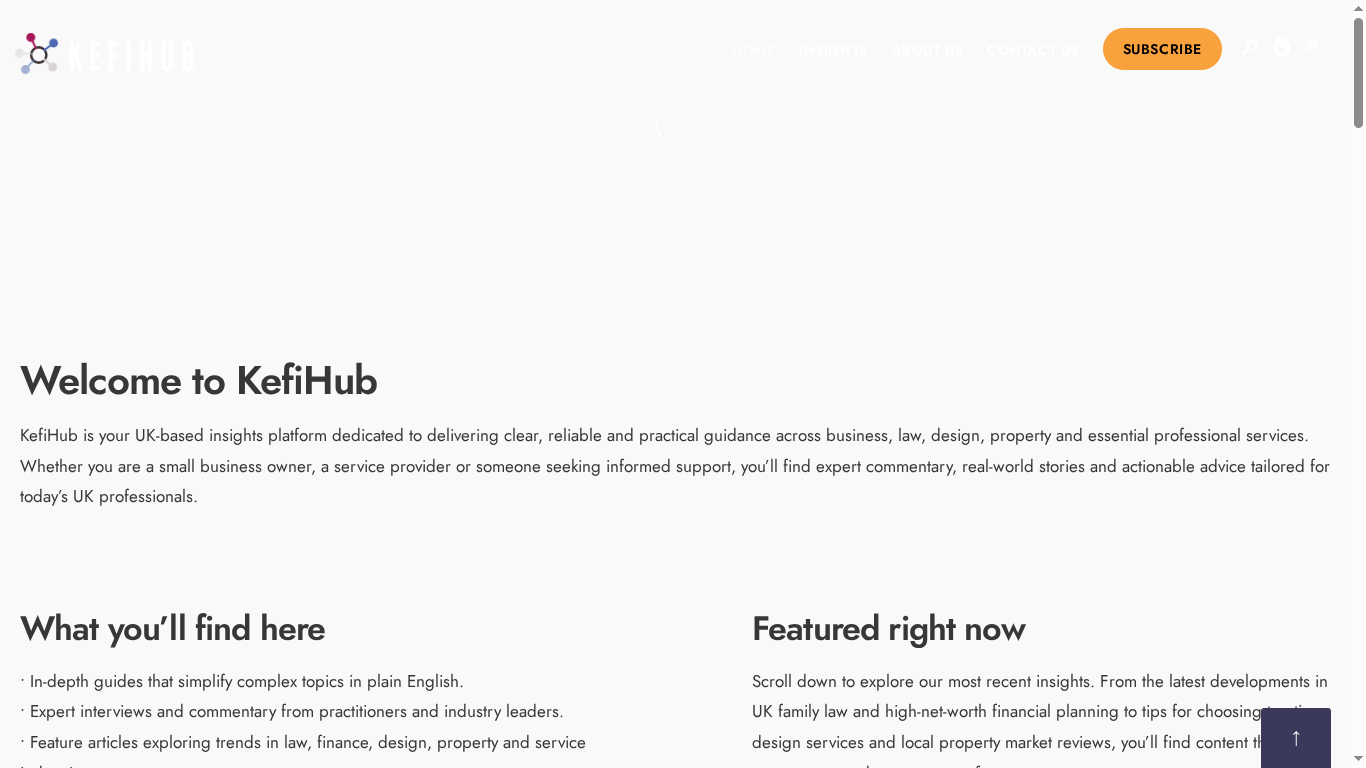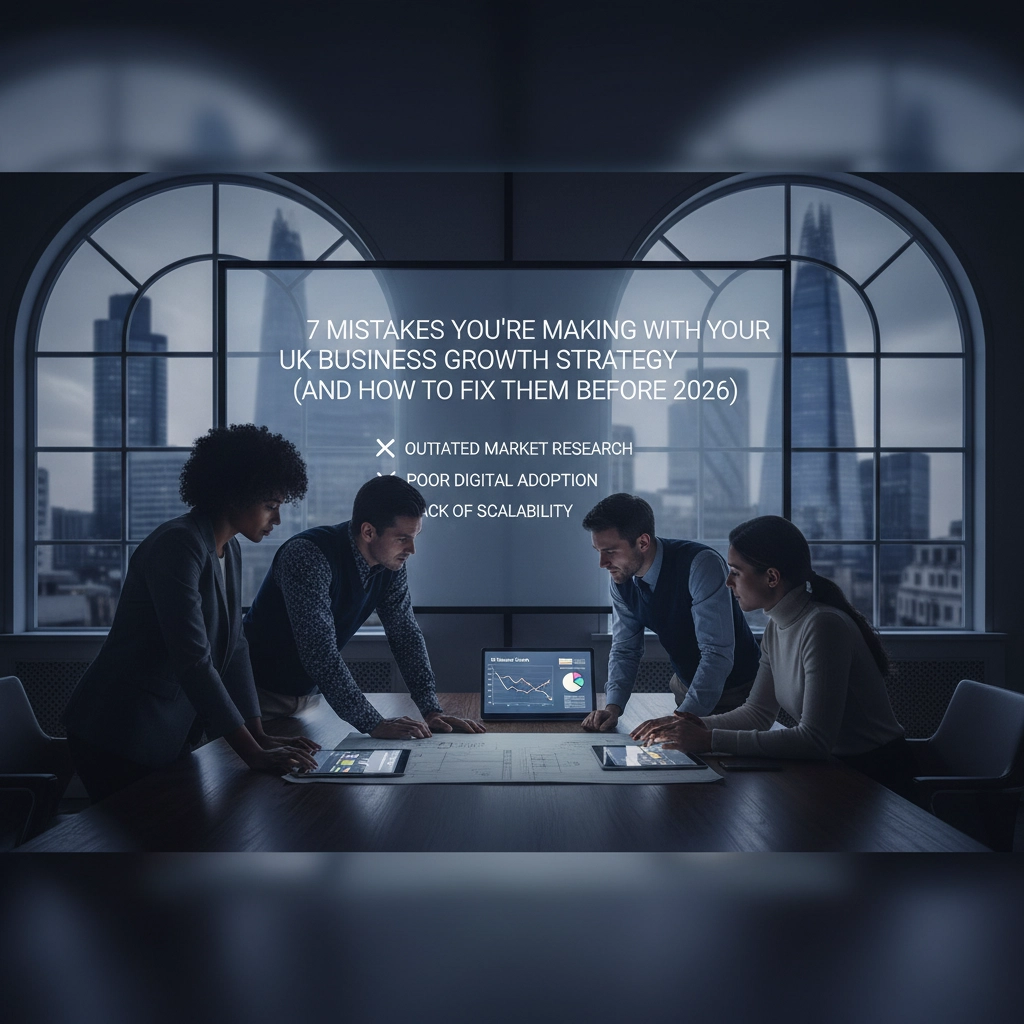Nearly one in five people in the UK live with a disability, yet many business environments still overlook accessibility and inclusion. Creating workspaces and services that welcome everyone is now a basic expectation, not just a legal box to tick. This shift is driving smart companies to rethink everything from design choices and materials to branding, technology, and client experience. Discover concrete ways to shape modern spaces and services that do more than meet compliance—they truly empower every individual.
Table of Contents
- Embracing Accessible And Inclusive Design For All
- Leveraging Sustainable Materials In Business Spaces
- Minimalist Branding That Builds Trust
- Prioritising Digital-First Interactions
- Integrating Ai Tools For Streamlined Processes
- Personalising Client Experience In Legal & Property
- Designing Flexible Spaces For Hybrid Work Needs
Quick Summary
| Takeaway | Explanation |
|---|---|
| 1. Prioritize accessibility in design | Make inclusion integral to every design stage for diverse user needs. |
| 2. Select sustainable materials strategically | Choose materials that reduce carbon footprint while enhancing performance and aesthetics. |
| 3. Embrace minimalist branding principles | Simplify visual and verbal communication to build trust and recognition with audiences. |
| 4. Innovate with digital-first approaches | Ensure online experiences are seamless and accessible for all users regardless of their abilities. |
| 5. Design adaptable spaces for hybrid work | Create flexible work environments that cater to various individual and team productivity styles. |
1. Embracing Accessible and Inclusive Design for All
Accessible design is no longer a niche consideration but a fundamental requirement for modern UK professionals. The future of design demands solutions that welcome and empower everyone, regardless of their physical abilities or personal circumstances.
The Royal Institute of British Architects (RIBA) emphasizes that inclusion should be integrated at every stage of design and construction. This means moving beyond compliance and creating environments that genuinely serve diverse human needs.
Key Principles of Accessible Design:
- Universal usability for different body types and abilities
- Adaptable spaces that accommodate multiple user requirements
- Intuitive interfaces and interactions
- Sensory considerations for visual impairment and neurodiversity
Practical implementation starts with understanding user diversity. Conduct thorough research about your target audience. Map out potential barriers they might experience and design proactively to remove those obstacles. This approach transforms design from a functional necessity into a powerful tool for social empowerment.
By prioritizing accessibility, you create spaces and experiences that feel welcoming and dignified for everyone. Whether you are an architect, digital designer, or product developer, inclusive design is not just good practice it is a fundamental ethical commitment to human-centered innovation.
2. Leveraging Sustainable Materials in Business Spaces
Sustainable materials are transforming how UK businesses design and construct their working environments. The shift goes beyond environmental responsibility it represents a strategic approach to reducing operational costs and enhancing brand reputation.
According to the UK Green Building Council, sustainable material selection is crucial for addressing environmental impacts in the built environment. This means thoughtfully choosing materials that minimize carbon footprint while maintaining high performance standards.
Strategic Sustainable Material Selection:
- Recycled and reclaimed timber products
- Low carbon concrete alternatives
- Locally sourced materials reducing transportation emissions
- Natural insulation materials like hemp and wool
- Renewable surface finishes from responsible manufacturers
Practical implementation requires understanding your specific business context. Consider conducting a material audit to identify opportunities for sustainable replacements. Start with smaller projects or renovation areas to build confidence and demonstrate tangible benefits.
Beyond environmental gains, sustainable materials often provide excellent durability and aesthetic appeal. They signal your commitment to responsible business practices while potentially reducing long term maintenance expenses. By making informed material choices, you transform your workspace into a forward thinking environment that attracts conscious employees and clients.
3. Minimalist Branding That Builds Trust
Minimalist branding is about creating powerful visual communication that speaks volumes through simplicity. In a world saturated with complex marketing messages, stripping your brand down to its essential elements can actually amplify your credibility and connection with audiences.
Research from ArXiv suggests that effective minimalist design allows for customizable interfaces that maintain a strong brand identity. This approach demonstrates that less truly can be more when it comes to building trust and recognition.
Core Principles of Minimalist Branding:
- Clear and consistent visual language
- Purposeful use of white space
- Reduced color palette with strategic accent colors
- Typography that communicates confidence
- Streamlined messaging that cuts through noise
Practical implementation means ruthlessly editing your visual and verbal communication. Eliminate unnecessary elements that do not directly support your core message. Focus on creating a cohesive experience that feels intentional and thoughtful.
By embracing minimalism, you signal professionalism and clarity. Your brand becomes memorable not through complexity but through precision. Think of brands like Apple or Muji successful minimalist brands that communicate trust through deliberate simplicity. Your goal is to create a visual and verbal identity that feels effortless yet powerfully authentic.
4. Prioritising Digital-First Interactions
Digital-first interactions are no longer optional they are essential for modern businesses seeking to remain competitive and relevant. The future of professional engagement lies in creating seamless online experiences that prioritize user accessibility and convenience.
According to the Department for Education, accessibility and inclusive design are paramount in digital service delivery. This means designing interactions that work effortlessly for all users regardless of their technological proficiency or potential disabilities.
Key Strategies for Digital-First Design:
- Mobile responsive interfaces
- Intuitive navigation pathways
- Accessibility compliance standards
- Streamlined user authentication processes
- Multichannel interaction capabilities
Practical implementation requires a holistic approach. Start by conducting a comprehensive audit of your current digital touchpoints. Identify potential barriers that might prevent smooth user interactions and systematically address them. Consider user testing with diverse participant groups to ensure your digital interfaces truly serve everyone.
The goal is not just digital presence but digital excellence. By prioritizing digital-first interactions, you create experiences that feel natural intelligent and genuinely user-centric. Your digital platforms become more than tools they become extensions of your professional commitment to accessibility and innovation.
5. Integrating AI Tools for Streamlined Processes
Artificial intelligence is transforming professional workflows by offering unprecedented efficiency and precision. The key is not replacing human expertise but augmenting it with intelligent tools that enhance decision making and creativity.
Research from ArXiv highlights a critical approach called Human-in-the-Loop optimization. This method ensures AI tools work alongside human designers balancing technological capabilities with professional judgment and creative insight.
Strategic AI Integration Principles:
- Identify repetitive administrative tasks
- Select AI tools with transparent decision making processes
- Maintain human oversight and validation
- Continuously train and refine AI models
- Prioritize ethical and inclusive AI applications
Practical implementation requires a measured approach. Start by mapping your current workflows and identifying specific areas where AI can provide meaningful support. Look for tools that offer clear performance metrics and allow for human intervention. The goal is not complete automation but intelligent augmentation that respects professional expertise.
By thoughtfully integrating AI tools you create a dynamic workplace where technology amplifies human potential. Your processes become more efficient intelligent and adaptive transforming how you approach complex professional challenges.
6. Personalising Client Experience in Legal & Property
Client experience is no longer about transactional interactions but creating meaningful personalised journeys that demonstrate genuine understanding and care. In the legal and property sectors precision and empathy become your most powerful professional tools.
The British Council for Offices emphasizes creating inclusive environments that accommodate diverse client needs. This means moving beyond standard service models to develop adaptive approaches that recognize individual circumstances.
Personalisation Strategies:
- Develop detailed client preference profiles
- Offer multiple communication channel options
- Create tailored documentation templates
- Implement proactive status update systems
- Design flexible consultation approaches
Practical implementation requires a comprehensive understanding of your clients individual requirements. Consider conducting detailed intake assessments that capture not just legal or property needs but personal communication preferences communication styles and potential accessibility requirements.
By treating each client interaction as a unique opportunity for connection you transform transactional services into meaningful relationships. Your goal is to make clients feel heard understood and genuinely supported throughout their entire professional journey.
7. Designing Flexible Spaces for Hybrid Work Needs
Hybrid work models are transforming how professionals think about workspace design. The future of work demands environments that seamlessly adapt to changing team dynamics and individual productivity needs.
According to the British Council for Offices, workplace design must now prioritize inclusivity and adaptability. This means creating spaces that are not just functional but genuinely responsive to diverse working styles and preferences.
Key Flexible Workspace Strategies:
- Modular furniture with easy reconfiguration
- Technology enabled collaboration zones
- Quiet focus areas with acoustic design
- Multipurpose meeting spaces
- Integrated digital connectivity solutions
Practical implementation requires a holistic approach. Conduct surveys to understand your teams specific working patterns. Invest in furniture and technologies that can be quickly adjusted to support both collaborative and individual work modes. Consider creating different zones that cater to various working styles quiet focus areas energetic collaboration spaces and flexible hot desking environments.
The goal is to design a workspace that feels like a dynamic ecosystem rather than a static environment. Your flexible workspace becomes a powerful tool for attracting talent supporting productivity and demonstrating your organizational adaptability.
Below is a comprehensive table summarising the key concepts and strategies discussed throughout the article on inclusive design, sustainable materials, minimalist branding, digital-first interactions, AI integration, personalised client experiences, and flexible workspaces.
| Topic | Description | Key Considerations |
|---|---|---|
| Accessible Design | Focus on universal usability, adaptable spaces, intuitive interfaces, and sensory considerations. | Prioritise removing barriers for diverse users through research and proactive design. |
| Sustainable Materials | Use recycled, low carbon, local, and natural materials to minimise environmental impact. | Conduct material audits and start with smaller projects to ensure responsible sourcing and aesthetic appeal. |
| Minimalist Branding | Simplifies communication with clear visuals, white space, and focused messaging. | Edit visual and verbal elements for a streamlined, intentional brand image. |
| Digital-First Interactions | Ensure seamless and accessible online experiences with responsive interfaces and clear navigation. | Conduct audits for user barriers and incorporate accessibility standards and user testing. |
| AI Integration | Enhance workflows with AI that complements human expertise and improves efficiency. | Map current processes, choose transparent AI tools, and maintain human oversight. |
| Personalised Client Experience | Create adaptive and empathetic journeys in legal and property sectors. | Develop detailed preference profiles and offer flexible communication options. |
| Flexible Workspaces | Design adaptable environments for hybrid work models with modular furniture and collaboration zones. | Survey team needs and invest in adjustable furniture and technological solutions. |
Discover How to Lead with the Latest Design Trends in 2025
UK professionals face the challenge of embracing accessible design, sustainability, digital-first interactions and AI integration while creating flexible, client-centred spaces. Tackling these key pain points requires practical guidance and insights that demystify concepts like inclusive design, Human-in-the-Loop AI and minimalist branding. At KefiHub, we understand the pressure to transform workplaces and processes to stay competitive, efficient and empathetic.
Explore trusted resources in our Trending Archives – Kefihub where you can find expert commentary and actionable advice tailored for your journey.

Take the next step to future-proof your professional approach by visiting KefiHub. Immerse yourself in our Digital Archives – Kefihub for cutting edge insights on digital-first strategies. Start making informed decisions today that build trust, inclusivity and innovation into every project and client interaction.
Frequently Asked Questions
How can I implement accessible design principles in my projects?
To implement accessible design principles, start by conducting research on your target audience’s diverse needs, identifying potential barriers. Focus on creating adaptable spaces with intuitive interfaces that cater to various abilities within a project timeline of 30–60 days.
What sustainable materials should I consider for my next design project?
Consider using recycled materials, locally sourced options, and natural insulation to enhance sustainability. Begin by conducting a material audit to identify replacements that reduce your carbon footprint while maintaining quality, aiming for a transition within your next project cycle.
What steps can I take to create a minimalist brand identity?
To create a minimalist brand identity, focus on clear, consistent visuals and streamlined messaging. Start by reviewing your existing branding materials, removing unnecessary elements, and refining your color palette and typography, ideally completing this within 30 days.
How can I ensure my digital-first interactions are user-friendly?
To ensure user-friendly digital-first interactions, audit your current digital touchpoints and identify barriers that hinder accessibility. Implement intuitive navigation and comply with accessibility standards, aiming to enhance the user experience across all platforms within 60 days.
What are effective strategies for personalising client experiences in the legal and property sectors?
Effective strategies for personalising client experiences include developing detailed client preference profiles and offering various communication channels. Begin by assessing your current client interactions and creating tailored templates and approaches to meet individual needs, targeting improvements within your next engagement cycle.
How can I create flexible workspaces that accommodate hybrid work needs?
To create flexible workspaces for hybrid work, invest in modular furniture and technology-enabled collaboration zones that can be easily reconfigured. Survey your team to understand their working styles, aiming to implement adaptable zones that support both individual and collaborative work within 90 days.
Recommended
- How to Choose the Best UK Digital Design Studio: AI vs Traditional Approach Compared – Kefihub
- Business As Service Guide: Unlocking Value in 2025 – Kefihub
- 7 Content Curation Strategies Every Business Owner Needs – My Blog
- Exhibition Stand UK: Creative Design Ideas to Attract Visitors











